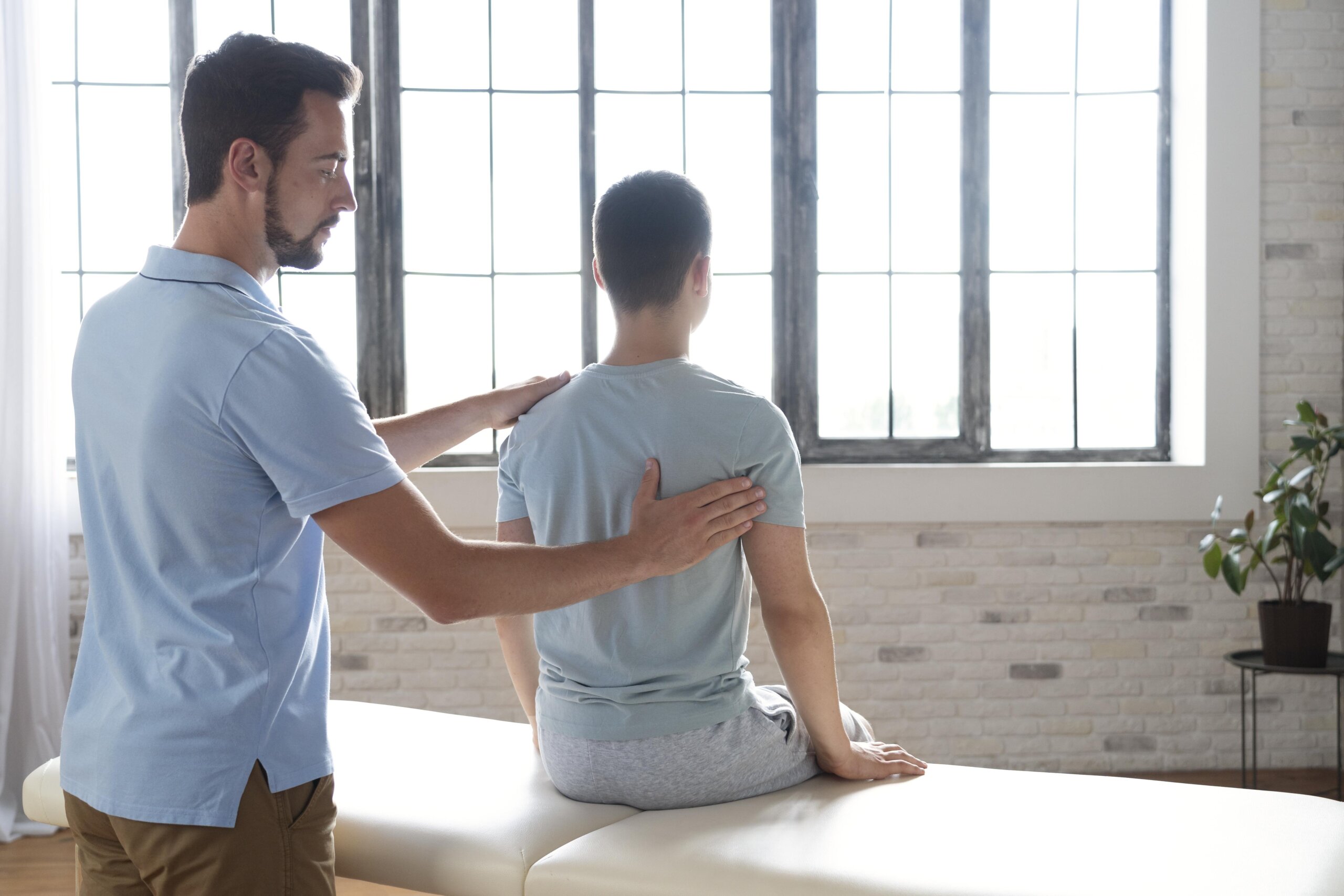Osteopathic Manipulation for Back Pain Focuses on Muscles/Connective Tissue

Individuals suffering from musculoskeletal injuries generally experience persistent pain, stiffness, or discomfort, especially in the back, legs, shoulders, or the entire torso. These conditions can severely limit daily activities, affecting everything from walking and bending to sleeping and working. One of the most effective therapies available for improving flexibility, enhancing mobility, and reducing inflammation is osteopathic manipulation treatment (OMT). This hands-on, holistic approach not only addresses the source of pain but also supports the body’s natural ability to heal itself.
Origins of Osteopathic Manipulation
Osteopathic manipulation for back pain is a branch of osteopathic medicine, founded in the late 1800s by Dr. Andrew Taylor Still. The origins of this practice are deeply personal: after losing members of his own family to meningitis, Dr. Still devoted himself to studying the human body’s natural healing mechanisms. He believed that the body’s structure (bones, muscles, connective tissues) and its function are closely interrelated, and that restoring balance between them can lead to recovery without excessive reliance on drugs or surgery. This philosophy evolved into what is now known as OMT — a holistic system that integrates body, mind, and spirit into the healing process.
How OMT Works
OMT is a highly practical, physical approach to treatment. Trained osteopathic physicians use their hands to diagnose, treat, and prevent injury or illness by moving, stretching, and gently applying pressure to muscles and joints. By realigning bones and muscles, they restore structural harmony, allowing the body to activate its own self-healing mechanisms.
One of the key benefits of OMT is its effect on the lymphatic system, which plays a crucial role in reducing swelling and inflammation by removing waste and toxins from the body. Improved circulation and lymphatic flow can accelerate recovery and relieve pain naturally.
Techniques Used in OMT
OMT isn’t a single technique but rather an umbrella term for more than 25 distinct hands-on methods, each tailored to the patient’s condition and tolerance level. Some of the most common include:
-
Counterstrain – Gently shortens the affected muscle or tissue to deactivate pain trigger points, then gradually eases it back to a normal length.
-
Myofascial Release – Applies light, sustained pressure to relieve tightness in connective tissue and restore mobility.
-
Effleurage – Long, gliding strokes used to encourage relaxation, improve circulation, and reduce muscle tension.
-
The Still Technique – Moves the joint through its full range of motion, helping tissues to release restrictions.
-
High-Velocity, Low-Amplitude (HVLA) – A quick, controlled thrust used to restore proper joint alignment and mobility.
What to Expect in a Session
A typical OMT session begins with a thorough medical assessment. The physician will review your health history, discuss your symptoms, and perform a physical exam to pinpoint areas of tension, misalignment, or restricted movement.
You may be asked to stand, sit, or lie down during the treatment. The practitioner then uses gentle manual techniques to move muscles and joints according to a personalized treatment plan. Sessions can last anywhere from 15 minutes to an hour, depending on the complexity of the case.
Many patients feel immediate relief after a session, though some may experience mild soreness for a day or two as the body adjusts.
Who Can Benefit from OMT?
While OMT is most often sought for lower back pain, it can be used to address a wide range of conditions, including:
-
Neck and shoulder pain
-
Joint pain and stiffness
-
Headaches and migraines
-
Sports injuries
-
Sciatica
-
Breathing difficulties (caused by musculoskeletal restrictions)
-
Digestive discomfort linked to muscular tension
-
Sleep problems caused by chronic pain
OMT is suitable for patients of all ages — from children to seniors — but certain conditions require caution. People with fractures, advanced osteoporosis, cancer, open wounds, or recent surgical incisions should consult their osteopathic physician before undergoing treatment.
What Makes OMT Unique?
OMT is more than just a form of physical therapy or massage. Here’s why it stands out:
-
Holistic Philosophy – OMT doesn’t just treat symptoms; it looks at the entire body, its lifestyle patterns, and its environment to identify root causes of discomfort.
-
Lymphatic Benefits – By improving lymphatic drainage, OMT helps the body clear toxins and reduce inflammation naturally.
-
Non-Invasive – No incisions, no injections, and no long recovery time — OMT uses your body’s natural healing ability.
-
Customizable Approach – Every session is adapted to the patient’s needs, health history, and comfort level.
-
Integration with Other Therapies – OMT can complement other treatments like acupuncture, chiropractic care, and traditional physical therapy.
The Science Behind OMT
Research supports the use of OMT for certain conditions, particularly chronic lower back pain. Studies show that patients receiving OMT report significant pain reduction, improved function, and decreased reliance on pain medications. Some findings also suggest that OMT can enhance recovery after surgery and reduce complications in certain medical conditions by improving circulation and musculoskeletal function.
Self-Care After OMT
After your session, your doctor may recommend gentle stretching, staying hydrated, and avoiding strenuous activities for 24 hours to let your body adjust. Over time, regular OMT treatments combined with proper posture, exercise, and nutrition can help maintain results and prevent future injuries.
Bottom Line
If you suffer from musculoskeletal injury, reduced flexibility, or inflammation — especially in the back — osteopathic manipulation treatment is worth considering. It offers a safe, effective, and natural path to relief, combining traditional medical knowledge with a holistic healing philosophy. By restoring balance to your body’s structure, OMT not only relieves pain but also improves your overall quality of life.
Instead of just masking symptoms, OMT works with your body to restore optimal function — making it an empowering choice for anyone seeking long-term wellness.
If you’d like, I can also format this into a clean, SEO-friendly article with subheadings and keyword optimization so it’s ready for publishing. That would make it more discoverable online and easier for readers to navigate.




